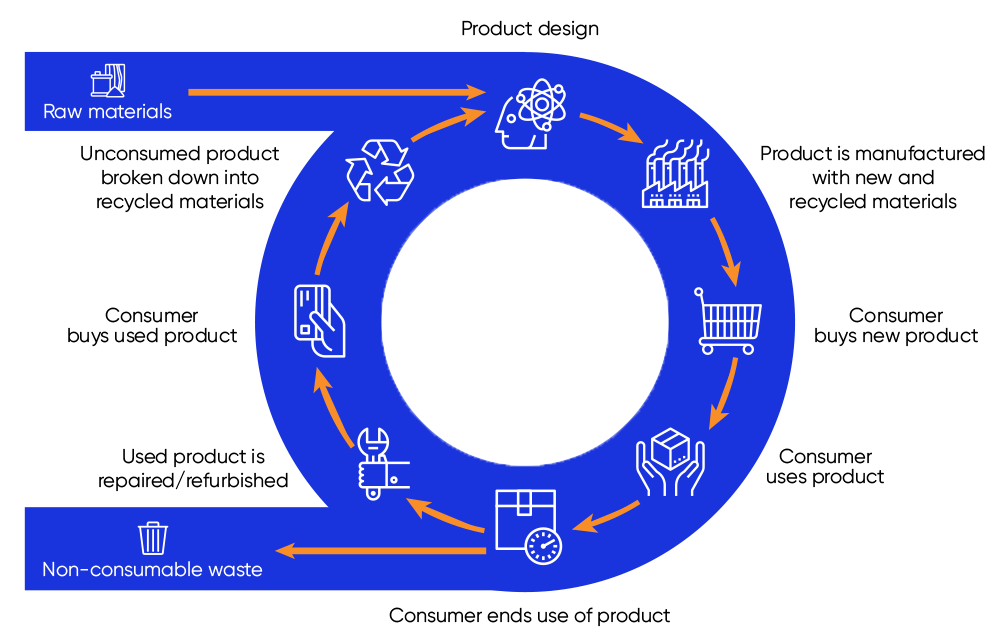Many retailers hold the common misconception that environmental responsibility comes at the cost to the bottom line, but efforts to reduce landfill consumption and carbon emissions don't need to eat into profits.
It is no longer enough for retailers to simply be agile and efficient, responding to changing market demands and reducing costs. Increasingly, businesses must also respond to customer pleas for increased ecological sustainability.
Retailers are in a unique position – they have the ability to cut costs by tapping into troves of unused data to unlock customer insights and optimize their supply chain, while also keeping their products out of landfills, which in the U.S. see five billion pounds of returned goods each year.

Circular inventory management, a retail concept around the buying back of pre-loved gear and refurbishing and reselling it to new audiences, meets the increasing demands for sustainability.
The key is circular inventory management, a popular concept in retail right now. But for a business to sustainably manage returns and used products, it is essential to know where each item is at any moment in time. Most retailers, however, have a broken process. They hand control of their used products to a third party, losing visibility into their supply chain and losing the valuable data that comes with having an intelligent, holistic supply chain solution.
Companies like Levi Strauss & Co., REI and Patagonia are well known for their pre-loved gear platforms. Customers love it – they feel heard because the companies responded to the increasing demand for sustainability, which leads to increased customer engagement and loyalty. The pre-love items are not only kept out of landfills, but they remain a source of revenue.
While the third-party vendors running the companies’ pre-loved gear platforms do an amazing job at receiving, prepping and storing inventory until a customer makes a purchase, they often use their own unique identifiers and systems that don’t talk to the retailers’ without additional effort to integrate meaningfully into their own data and analytics. This basically cuts the retailers off from their supply chains. The data behind the second-hand platform is just as important as the platform itself, yet those companies struggle to make sense of it.

That lost visibility means companies like Levi’s don’t know what, how many or when items will be available, losing out on prime marketing opportunities. When it comes time to post a product to its used website, the company must painstakingly figure out the item’s original SKU and then determine what price the used item should be sold for. It is an arduous process, but one with a solution.
Data is a company’s single most valuable asset. No matter the industry or size of the company, data should be foundational to every business decision. To access that data affordably, in a way that gives a company a quick return on their investment and access to real-time analytics, that company needs a modern, virtualized data estate.

A modern data estate at the heart of a circular inventory system allows for full visibility along the retail lifecycle, allowing proactive decisions to be made around product and services.
By connecting the retailers’ and vendors’ systems and applying unique identifiers that apply throughout the entire supply chain, retailers can monitor items through the return and resale process in real time. This opens the doors to supply chain optimization, a streamlined inventory process, smart pricing strategies, new marketing efforts and a better understanding of market trends – it is an opportunity to be proactive rather than reactive. If a company knows 1,000 used jackets are about to become available and they have access to the customer behavior analytics for the used side of the business, that enables marketing campaigns that can drive faster sales and increased customer loyalty.
With a technology partner versed in data virtualization, modern app development and business intelligence tools like Power BI, retailers can unlock the valuable insights from which they’ve long been cut off. Additionally, any third-party vendors will have access to this data as well, opening the doors to an even deeper and more meaningful relationship with their retail partners and increasing overall business intelligence.
Keeping returned and used items out of landfills has a major impact on the planet. For example, extending the average life of an item of clothing by just three months of active use can lead to a 5 to 10 percent reduction in its carbon, water and waste footprints. An easy way to reduce waste and positively impact the planet is through a smart circular inventory strategy that enables data-driven business insights and decisions. Blueprint is in this fight with you. Let’s help the planet and engage more deeply with your customers all in one motion.

